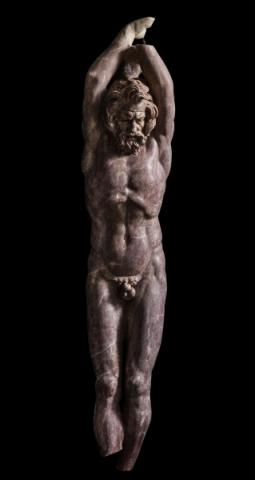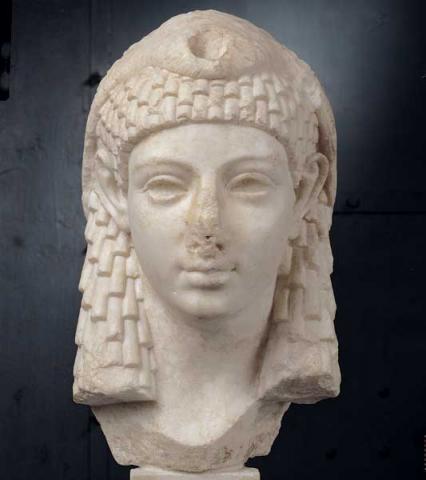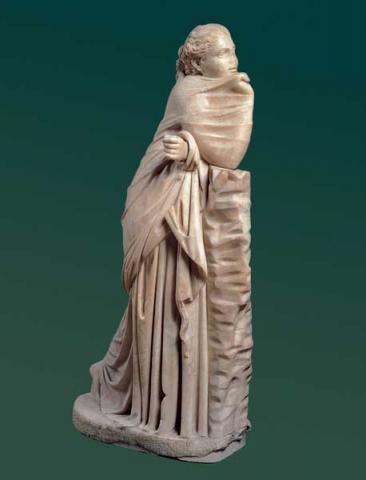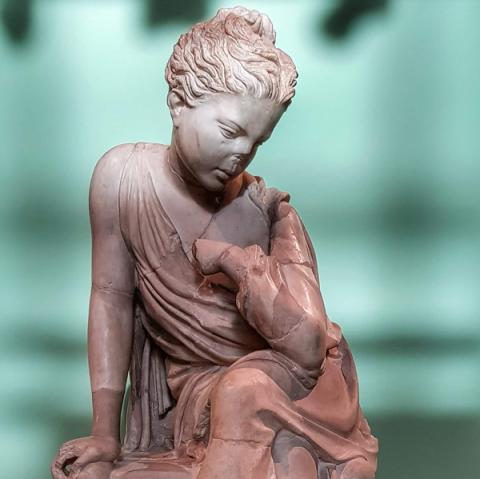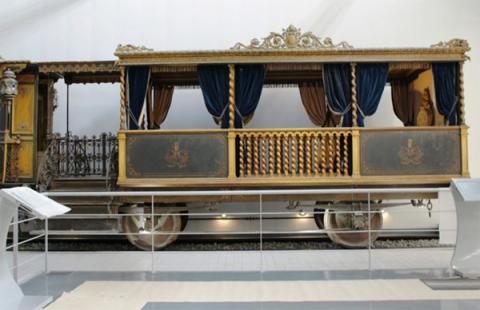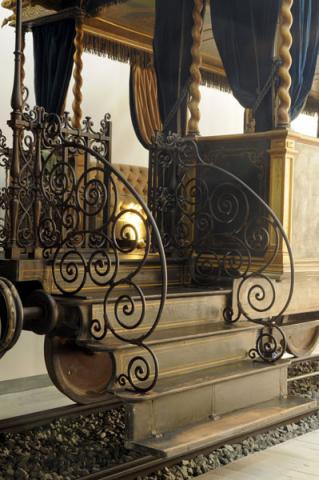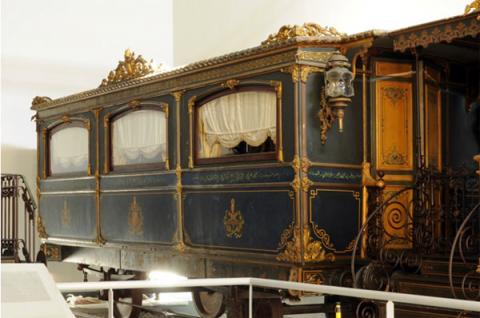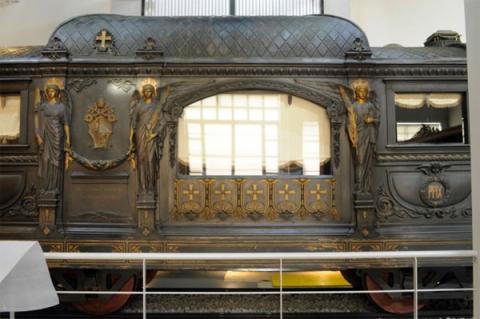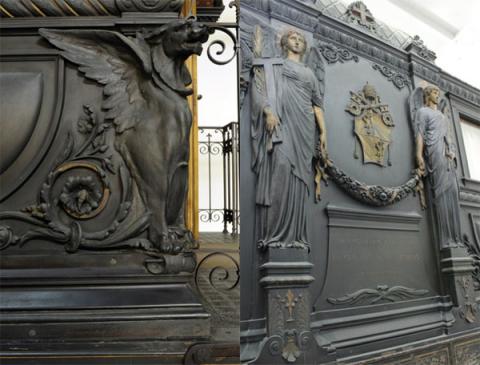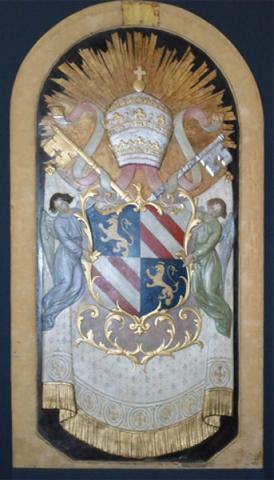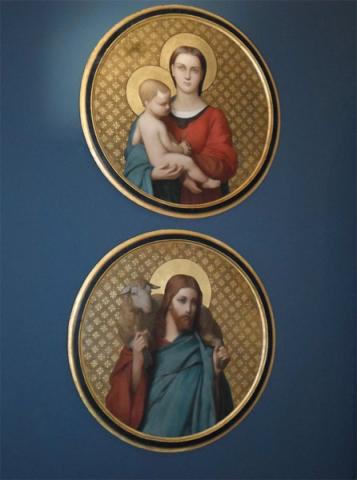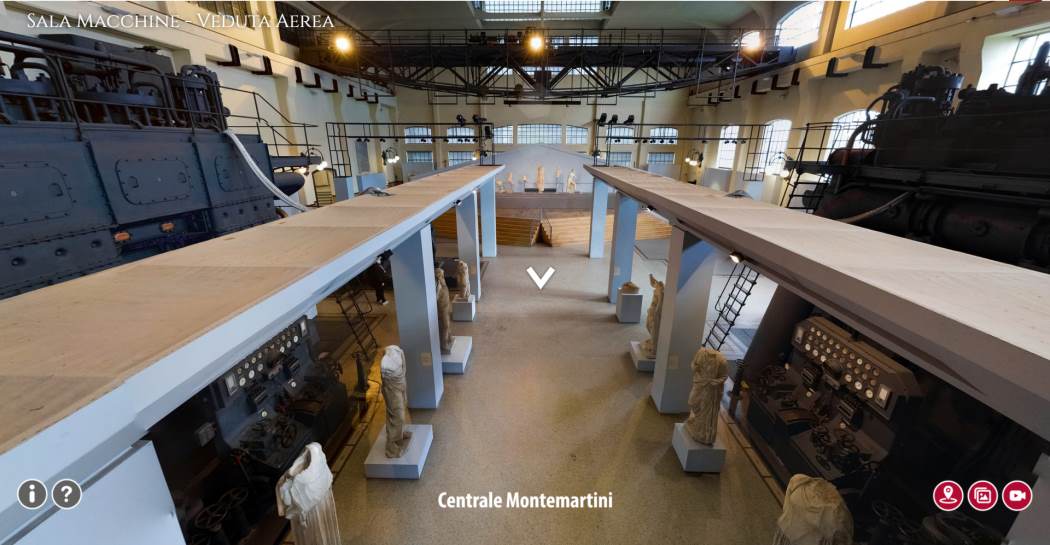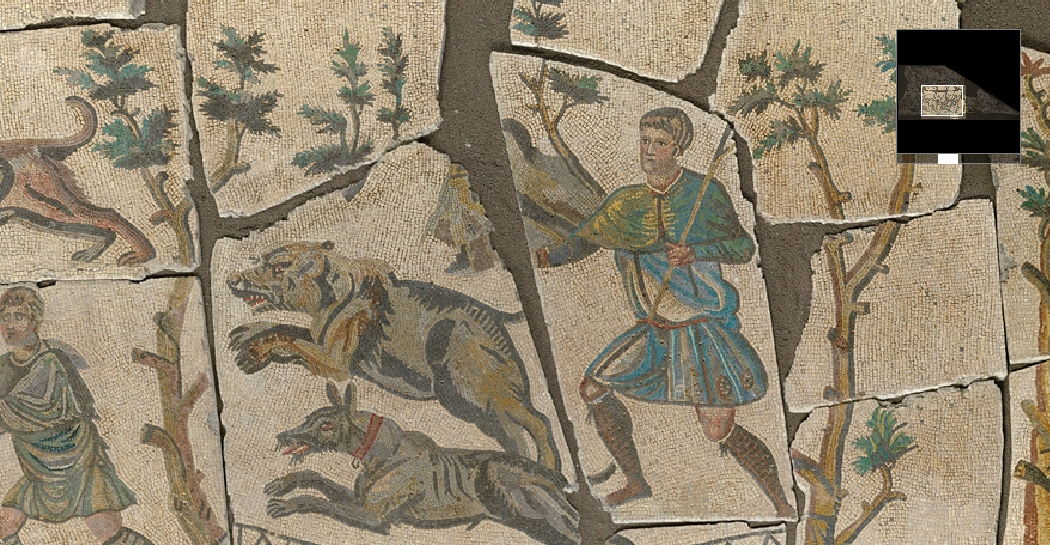Room of the Train of Pius IX (formerly Boiler Room no. 2)
The environment that today is dedicated to the exposition of Pope Pius IX’s train wagons was originally a sector of the Boiler Room n. 2 of the Montemartini thermoelectric plant.
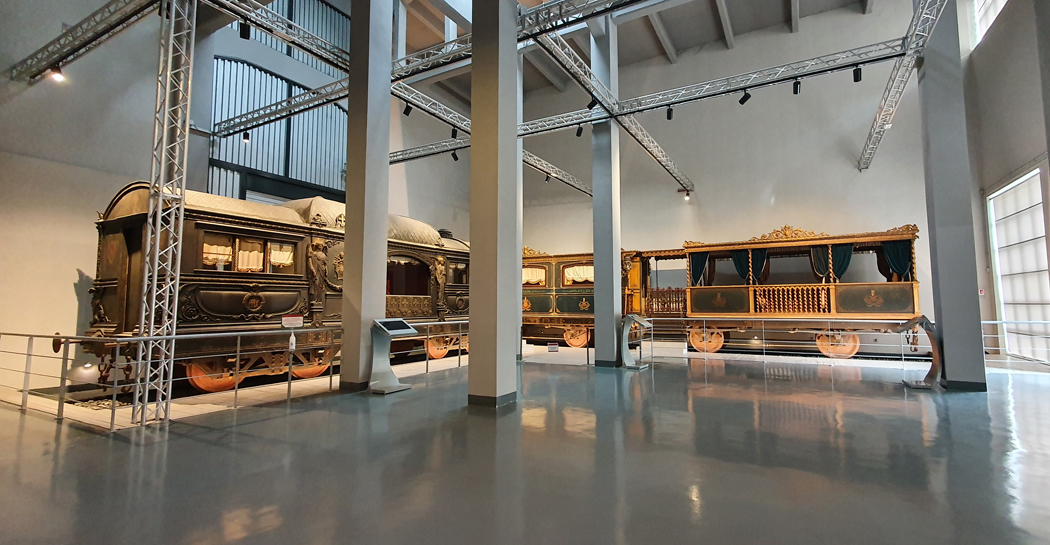
The Boiler Room 2. History and reuse
The design of a second Boiler Room, adjacent to the first of 1912, began in 1921, when it became necessary to equip the production plant with a new Tosi 9000 HP turbo-alternator and its battery of boilers. The contract was entrusted to the Italian Ferrobeton Company and was completed in 1924. The result was a large room, divided into three naves by two rows of high reinforced concrete pillars, with a two-level floor plan, in which three new large steam boilers built by Tosi - Garbe were housed (photo).
The works carried out in 1950 for the expansion of the adjacent Boiler Room no. 1 involved covering the southern front of the building's left aisle and modifying the facade, which took on its current appearance. In 1954, concurrent with the phase of progressive decline of the thermoelectric plant, all the machinery of the Hall were abandoned and sold, while the environment, partially remodelled and divided into two sectors through metal shutters, was reused by Acea, partly as testing laboratory for high voltage power and partly as carpentry. In addition to the bridge crane, the only industrial element that survived the dismantling of the machinery of the Hall is a tank for storing naphtha for the boilers supply, which was originally placed on the trusses of the central corridor, as can be seen from an image of 1924 (photo).
After the acquisition of the spaces of the Centrale Montemartini by the Sovrintendenza Capitolina, the southern sector of the former Boiler Room n. 2 has been the subject of complex renovation work, aimed at making it the permanent exhibition site of the carriages of the papal train coming from the Museum of Rome in Palazzo Braschi.
Pope Pius IX’s train
Giovanni Maria Mastai Ferretti, who became pope on 16 June 1846 taking the name Pius IX, was fully aware of the key role that railways would play in the economic, social and political development of European nations in the immediate future. In 1846, soon after his election, he gave orders for the construction of a series of railways linking Rome to the leading cities of the Papal States.
The papal train was built in 1858 at the initiative of the Pio Centrale and Pio Latina companies, which commissioned them from French companies as a gift for the pope. On 3 July 1859 the Pope made his maiden journey in these luxurious carriages, travelling from the Porta Maggiore train station, the terminus of the papal railways, to Cecchina station, Albano.
After the Capture of Rome in 1870, the train was left in sidings in Civitavecchia and then moved to Roma Termini where it was stripped of a number of its decorations. In 1911, after being recognised as an important historical document, it was restored by the Italian State Railways and placed on show at Castel Sant’Angelo to mark the fifty year celebrations of the Kingdom of Italy. In 1930, the Italian State gave it to the Municipality of Rome and it was transferred to the newly established Museo di Roma, first in Via dei Cerchi and then, from 1951 onwards, to the new museum site in Palazzo Braschi.


























